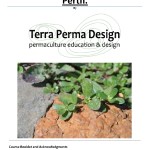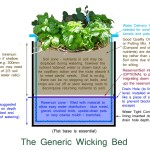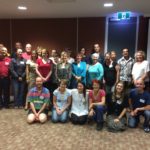Profitable Permaculture Farms – From Home scale to 100 Acre Scale Farm
Ever feel that it is too difficult to find examples of permaculture that are financially and ecologically successful?
You could be saving money towards your permaculture farm for the next 20 years, but if you can’t be sure that it will be profitable and self-sustaining, then what’s the point? You’ll just burn through your savings and fall back onto the grindstone, feeling disappointed.
I regularly find people who complain about the lack of proven models in permaculture, and, to be honest, these models are hard to find.
But they are out there, and let me reassure you, they are profitable and, to my mind, viable models to follow.
Most importantly you don’t have to reinvent the wheel.
Here is what you’ll learn:
• The different scales of successful permaculture farms
• One example of each, together with some background about the people behind them
• How the farms operate and a breakdown of their income – I got replies confirming my guesstimates from everyone listed except Mark Shepard
• The different types of profitable permaculture operations
And a whole lot more. Let’s get to work.
Urban/Suburban Homescale
Paradise Lot/Food Forest Farm: Eric Toensmeier and Jonathan Bates – 1/10 acre suburban backyard – 10 years of establishment
Jonathan, Eric and their families manage a 1/10 acre urban backyard garden in Holyoke, Massachusetts. They have written a book, Paradise Lot together and today they’re co-managing the site in conjunction with their individual businesses. Eric Toensmeier has been involved with permaculture since 1990, and is the author of Perennial Vegetables, and with Dave Jacke, co-author of Edible Forest Gardens. His writing, consulting, and teaching business can be found at Perennial Solutions.Jonathan, conversely, was inspired by his work and life with Eric on Paradise Lot, founded Food Forest Farm Permaculture Nursery, a nursery specialising in educational services and useful/edible plant sales.
During the last 10 years, Eric and Jonathan have converted their tiny 1/10 acre suburban backyard into a perennial food garden of exotic plants: a functioning cold-climate urban paradise. They have over 200 food plants in cultivation. Having 40 species of fruit and 70 perennials with edible leaves makes for a long season of foraging. This edible landscape features little-used native plants, as well as useful species from around the world. Many are arranged in an edible forest garden, an edible ecosystem composed of perennial overview polycultures of multipurpose plants. Other distinctive features of the farm include a tropical crop garden, an edible water garden, poultry, annual beds, and a bioshelter greenhouse with aquaponics under development. Their book, Paradise Lot, tells the story of the garden’s development from a bare patch of ground to a diverse and productive demonstration site.
Backyard food forest is a perennial system. There is no immediate return: it’s a short-term investment for long-term gain. Nonetheless, they have figured out a way to supplement their income through their project, and are now reaping the rewards. By the 3rd – 4th year the perennial systems started to reproduce a lot, and they started giving away the surplus plants to people and friends. People were interested, and because the plants were rare and exotic, they began to charge 10$ a plant. Today, this is a viable business for Jonathan. Half of the income for his family depends on this business, moving to more than half and full. This is in addition to all the other things they are doing together such as education services – speaking events, presentations, tours, consultations.
Here is the full breakdown of the Farm Income:
• Half of the income comes from the nursery business (50%)
• Education services – speaking events, presentations, workshops (20%)
• Consultations (20%)
• Tours (5%)
• Fresh fruit and greens (5%) – getting 80% of fruit and fresh greens in terms of feeding the family during the growing season – can be classified as income
Summary and Jonathan’s remarks:
• Eric and Jonathan have established a keystone portfolio property – it took ten years of work establishing a perennial system
• Designing an edible food forest and positioning themselves, through writing, as an authority – opportunity for consultancy and education on the site
• Jonathan started small by selling surplus plants and building up a client base – eventually, the nursery business was born
• Although still limited by space, there is still enough room for a profitable small nursery and side projects such as a bioshelter for aquaponics
• Not all of Jonathan’s income is from the farm/garden – his wife Megan also brings in some income from her business
• They also buffer the down times with savings from their previous careers, along with downsizing their lifestyles
Amazon #ads
Homestead Scale
Whole Systems Design: Ben Falk – 10 acre Farmstead – 10 years of establishment
Ben Falk is the owner of Whole Systems Design, LLC, and author of the book The Resilient Farm and Homestead. He works as a designer, builder, and ecologist, and has more than 200 site development consultations across New England. Moreover, he has facilitated dozens of courses on permaculture design, property selection, microclimate design, and design for climate change. His WSD studio site in Vermont’s Mad River Valley functions as a proving ground for the regenerative land developments featured in the projects of Whole Systems Design.
Today, his site is 10 acres of wet field and forest that is transitioning into an edible landscape of ponds, fruit and nut trees, forest and pasture, stone and timber structures and outdoor living spaces. The farm is located on a slope, with a series of terraced ponds that trickle nutrients down to a series of natural detention basins growing rice, as well as building rich soil in the process. In the beginning, the land was overgrazed, clearcut and abandoned, planted with white pine forest. However, in the last ten years Ben has managed to transform it into a showpiece for what is possible when you use the principles of permaculture.
Ben has invested himself into developing the site, eventually setting it as a portfolio one. His expenses are low because he lives in a well-designed and energy-efficient studio. 80% of his calories come from the homestead, and he can also gather fuel, building materials and other resources from the site. This said, his income comes from designer work, consulting, teaching PDC and speaking. His main source of income is from landscape architecture professional practice – from property selection to site development, master planning and site design, and construction and project management. He consults, as well as performing full implementation services, during all phases of this process. On top of this, he has a nursery business and is well known for his work on Seaberry popularization.
Farm Income:
• Half of the income comes from Services – consulting, design and construction services – (50%)
• Education – presentations and workshops, PDC courses, Book – 30%
• Lowered expenses – can be classified as income – 10%
– high degree of food, fuel, fibre, forage self-sufficiency and self-reliance
– 80% of calories comes from the homestead
– low housing costs
• Small nursery business – 8%
• Tours – Informational Walking Tour – 2%
Summary and Ben’s remarks:
• Ben believes that the ideal size for most people is 5-10 acres – that’s enough land to sustain yourself and provide for your needs, though you can go bigger if you want commercial grazing or forestry
• Establishing a keynote portfolio site is very important in demonstrating to people what works – it also helps with gaining employment as a consultant and in encouraging people come to workshops, PDC-s and tours on the site.
• The main source of income is from the farm – he is not producing for the market, just catering for his needs – thus lowering his expenses
• The nursery business is an important part of the farm’s income, especially when developing genetic lines
• Heavy focus on resilience – a high degree of self-sufficiency and self-reliance, small business
• The exact figures of farm income varies from year to year
Amazon #ads
Small Farm and Commercial Operation
Miracle Farms: Stefan Sobkowiak – 5-acre Commercial Permaculture Orchard – 22 years of establishment
Stefan Sobkowiak is an educator, biologist and master of landscape architecture. He has taught fruit production, landscape plants and design, and the natural history of vertebrates at Montreal’s McGill University. As an owner/operator of a landscape design office for 20 years, he has served over a hundred clients. More recently his focus has been on Permaculture Design, devoting his time to teaching, and his farm ‘Miracle Farms’ – the largest commercial permaculture orchard in Eastern North America. Recently with film maker Olivier Asselin, he released a DVD The Permaculture Orchard: Beyond Organic, a feature-length educational film that teaches how to set up your own permaculture orchard on any scale.
Miracle Farms is a 12-acre property located in Quebec’s western Monteregie region, in USDA hardiness zone 4. The farm was originally developed as a commercial monoculture apple orchard, making the transition to organic upon purchase in 1993, and was certified organic in 1996. Eventually, Stephan understood the limitations of the organic model originating from monoculture. Since 2007, four acres were converted to a permaculture inspired “u-pick” orchard. This orchard now offers over 80 cultivars of apples, in addition to several types of plums, pears, cherries, and countless other fruits and vegetables. What’s unique about this is that Stefan has planted these orchards using a NAP pattern (NAP stands for nitrogen fixer, apple, and plum/ pear). Mixing in nitrogen fixing trees among fruit trees also helps to create fertility and eliminates the need for external inputs of fertilizers, resulting in a circular ecosystem that virtually takes care of itself.
Everything is organized by following what Stefan calls a ‘grocery aisle’ concept, whereby everything in one row will be ripe and ready to harvest within a 10-day window. Despite the huge diversity of species, this allows for efficient harvesting, customers can walk down the row and easily gather the majority of the fruits and veggies they require in one go. The grassy lanes are used for pasture (as Mark Shepard does). In these lanes, he raises chickens, turkeys, guinea fowl, ducks and geese. His business model is a members only U-pick operation – Costco style membership. Over the years, Stefan has built up a customer base willing to come and pick the produce themselves, thus cutting down on labour costs. In doing this, members benefit from getting fresh, beyond organic, food for up to 50% less. Poultry is only available for his members, though for nonmembers there is a farm stand offering the farm’s produce. The farm is used as a continuing education lab for students in the permaculture courses, offering workshops (grafting, pruning, nursery propagation, raising small fowl, processing fowl) as well as for Interns. Farm tours are also available for groups.
Farm Income:
• Sale of Produce and Products – 70%
– Herbs, Flowers, Fruit Trees & Berries, Vegetables, Traps
– Meat birds
– Value add: juices from apples, dried fruit
• Education – 20%
– PDC, Workshops
– DVD
• Consultancy Service = 2%
• Tours of the farm – 8%
Summary and Stephan’s remarks:
• Grocery store concepts – there are windows for harvesting, same cultivars in the same row, while understory is growing all year
• CSA/U-pick operation – Costco style membership – members harvest so you don’t have that expense – 40% of fruit growing expense is harvesting and containers
• The location is very important – if people invest time coming further to you, you need to offer them something more
• You need to be consistent with production – to do that, diversify – when people come have something else to offer besides primary crops
• Making profit on an acre is stacking functions of apples, pears, vines, herbs, and animals grazing in grassy lanes
• The exact figures of farm income varies from year to year – e.g. last year was dismal with no tree fruit, although the best year for small fruit. So last year was a reversal with education and tours making up 70% and sale of produce and products 20%
• It’s great to have a diversity of yields to balance things out from year to year.
Amazon #ads
Medium scale farm
Food Forest (Hillier, South Australia): Annemarie and Graham Brookman – Permaculture farm and learning centre – 37 acre – 25 years of establishment
Developed by Annemarie and Graham Brookman, and their children Tom and Nikki, the Food Forest is a permaculture farm and learning centre located in Gawler, South Australia. They purchased their 15-hectare property 25 years ago when it was little more than a bare patch of land with scarce rainfall. With time and a good design, they have turned it into a viable permaculture farm that feeds both their family and the wider community.
Today, there are over 160 varieties of organically certified fruit and nuts, wheat and vegetables, free range eggs, honey, carob beans, Australian native foods, nursery plants and timber. It is recognised as one of Australia’s best and most sustainable organic small businesses, and has grown steadily for over 20 years, maintaining low debt and high equity levels. On the property, rainwater is collected for use in the house, solar panels heat the water, and photovoltaic cells provide the house with electricity, and surplus power is fed onto the grid. Water in the house is solar heated.
Their income is diverse and is consistent with the values they promote. One important part of it is having NASSA organic certification. They grow high-value perennials: nut crops – pistachios, walnuts, etc. They are recognised as Australia’s largest grower of organically certified pistachio nuts and carobs.
Through a fortnightly farmers’ market stall they sell fruit, vegetables and seedlings. They value-add: they grow grapes and produce wine, they grow olives and produce olive oil and a diverse range of other products.
They are a shining example of a successful and sustainable permaculture enterprise. Education is also a large part of the equation; they teach PDCs and once per year with David Holmgren as a teacher. In addition, they have a self-published DVD – Design for Life: the Food Forest Story about their journey towards establishing The Food Forest.
A lot of manual work is required on the farm, and to cope with the workload, Graham and Annemarie have regular helpers in the days leading up to the Farmer’s Market and then also have WWOOF-ers who live on the farm. They currently employ five local people (all part time) in addition to themselves (full time)
Farm Income
• Sale of produce and products – 50% – organically certified fruit and nuts, wheat and vegetables, free range eggs, honey, carob beans, Australian native foods, nursery plants and timber. Value added – wine, olive oil, cider…..
• Education, Tours & Media Sales – PDC, Workshops, DVD sales – 47%
• Consultancy Service – 1-2%
• Small nursery operation – 1-2%
Summary and their remarks:
- This scale of farming offers the possibility for growing diverse crops and economies of scale to earn money in an organic certification scheme
- The primary production/food processing and direct selling at farmers markets has relatively high costs
- …as distinct from Education, Media sales and Tours are time-intensive but require little expenditure
- Value adding is an important part of diversification and offers higher margins
- The contribution of WWOOFers to their economic model remains fairly invisible. They do a lot of work but also require training, supervision, food and housing
- Another example of keynote portfolio property that draws in the interest of people, which is then channelled into revenue from workshops and PDC
Amazon #ads
Broadacre Scale Farm
New Forest Farm: Mark Shepard – 100-acre – 15 years of Establishment
Mark is the founder and President of the Restoration Agriculture Institute, and CEO of Forest Agriculture Enterprises. He teaches Agroforestry and Permaculture worldwide and has also written the book, Restoration Agriculture. He runs New Forest Farm, the 106-acre perennial agricultural savannah, considered by many to be one of the most ambitious sustainable agriculture projects in the United States.
Mark and his wife Jen founded New Forest Farm in 1994. It’s now one of the most developed and productive perennial farms in North America – trees, shrubs, vines, canes, perennial plants and fungi are planted in association to produce food (for humans and animals), fuel, medicines, and beauty. New Forest Farm is a planned conversion from a typical row-crops grain farm into a commercial-scale, perennial agricultural ecosystem using oak savannah, successional brushland and eastern woodlands as the ecological models. The farm is entirely solar- and wind-powered, and farm equipment is driven by locally produced biofuels.
Over the last 15 years, Mark has planted an estimated 250,000 trees on his 106-acre farm. He uses agroforestry systems and alley cropping and silvopasture techniques. The main crops are chestnuts and hazelnuts. He also grows walnut, hickory, pine nuts, apples and pears, together with cherry trees, asparagus and winter squash. Cattle, pigs, lambs, turkeys and chickens also roam on the restored savannahs at New Forest Farm. He also runs a hard cider winery, fermenting his perennial fruits into ‘Shepard’s Hard Cyder’. Finally, he offers tours, cider tasting, and permaculture design courses.
His other business, Forest AG, offers consultation and design services, a wide selection of perennial nursery stock, as well as tree planting and nut processing services. Mark and the other designers specialise in whole-systems, ecological land-use planning with an emphasis on agroforestry practices and permaculture design – based on the New Forest Farm model.
The nursery business offers bare-root dormant nursery stock of food producing and woody crop plants, aiming at larger-scale Restoration Agriculture, Silvopasture, Agroforestry, and Permaculture growers. Medium scale woody crop growers can use the post-harvest processing equipment at the price too.
Farm Income:
Mark’s income was a tough (hazel) nut to crack. He is all over the place in respect to his stacking of business units, but here is my take on it. The farm site sells meat and nuts, and offers tours and education. The cider business is on its own. Nursery, services and consultation is part of Forestag enterprise.
• Produce and Products 50% – meat, value add – cider, hazelnut, chestnut, butternut, asparagus, nut pine and apple produce….
• Perennial nursery stock 20%
• Services 10% – consultancy services, tree planting and nut processing services.
• Education and book 10% -, 1-hour educational lectures, 3-hour introductory Agroforestry and Permaculture workshops, two-day design intensives, 3 day “weekend courses” as well as a 72-hour design course curriculum
• Low food expenses – 5%
• Tours and other income 5%
Summary:
• Using agroforestry systems enables a high volume of perennial crops, as well as annuals and animals to be simultaneously in the system
• Each form of produce or animal are different enterprises – i.e. apples are harvested by one enterprise and sold to the apple cider enterprise
• Focusing on just growing is too narrow an economic focus
• Real value is not just about profitability of a farm, but the whole picture has to be looked at
IN CONCLUSION
Here are some key areas to think about:
• It takes a long time to establish a financially functional system – in all of the above cases the minimum is ten years, so you need to think long-term, yet plan short-term
• Developing a keystone portfolio property offers an opportunity for consultation work, on-site PDC–s and tours, and establishes you as an authority on your climate
• The main source of income is scale-dependent, but education, consulting and nursery businesses can be integrated from the smallest scale.
• The greater the land, the more opportunities and more ‘on-farm’ income
• To balance things out from year to year have a diversity of yields
• Farming enterprise is too narrow a focus, we have to look at on-farm business, off-farm business, nursery business, real-estate investment.
So, don’t forget to have the big picture in mind. As Mark Shepard states:
“A Permaculture Farm ideally has a polyculture of plants, animals and activities occurring on it. In a polyculture system, there’s always something that can be grown, made or exchanged in order to acquire dollars and pay the bills. Once you start looking at Permaculture as a profitable venture, you start seeing all of the opportunity.”
So what you think? What have I missed? Do you have any better examples I could write about?
Let me know in comments!
Amazon #ads










